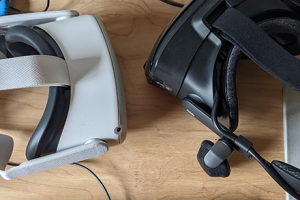
Creative Solutions at Alpine Electronics
I joined a startup team within Alpine Electronics as a Senior Engineer, where we focused on developing a third-party infotainment system and a rear-seat entertainment casting system—similar to AirPlay or Chromecast—built on custom Android-based hardware. My contributions spanned multiple areas, including utilizing AWS, web technologies, NodeJS, and MongoDB to support our initiatives. One of my first projects was enhancing our team’s local intranet site by incorporating Bootstrap, which improved its structure, added functionality, and elevated its visual design. Data tracking and web solutions at Alpine Electronics would become my area of contribution.
Data Tracking Projects
One of my projects focused on developing an API to track real-time statistics, including CPU usage, memory performance, and event markers from radios. The purpose was to host the data online and visualize it dynamically with interactive charts. Additionally, I included an option to export the data as a spreadsheet. To achieve this, I used AWS Elastic Cloud Services to set up a Linux Ubuntu virtual machine in the cloud. From there, I hosted a Node.js server alongside a MongoDB database to efficiently manage and serve the data.
The site was securely password-protected and hosted on a non-indexed domain. To minimize costs, I used the free credits available with my AWS account to host the virtual machine on a budget-friendly t2.micro instance. Additionally, the system featured a dropdown menu that displayed all online machines. This menu allowed users to easily select and monitor each machine’s status.

Plotting Live Data
After selecting a machine, the data loaded into a Plotly.js chart, providing quick and clear visual feedback on the large volumes of incoming data. I developed the backend using Node.js, creating multiple routes to handle data transmission and retrieval efficiently. On the front end, I combined HTML and vanilla JavaScript with jQuery and Bootstrap to improve functionality and streamline the interface.

Some of the data points included event markers, which users could manually set or the software could automatically trigger. These markers activated whenever anomalies or issues occurred with the radios. As a result, they allowed us to monitor the radios remotely. This setup provided real-time insights into problems as they happened, which enabled faster troubleshooting and quicker responses.

The chart offered an intuitive way to track various data points from the radios. Users could easily toggle between viewing multiple data streams simultaneously or focus on a single data point. They could make their selection directly from the chart’s sidebar. Meanwhile, MongoDB was an excellent choice for this project. It handled data insertion, queries, and retrieval efficiently with minimal latency. This ensured seamless performance throughout the system.

Exporting Data
Implementing this as a web-based solution made it incredibly convenient to access and visualize large amounts of data quickly from any location. Additionally, the data could be easily exported to a spreadsheet for more in-depth analysis.







